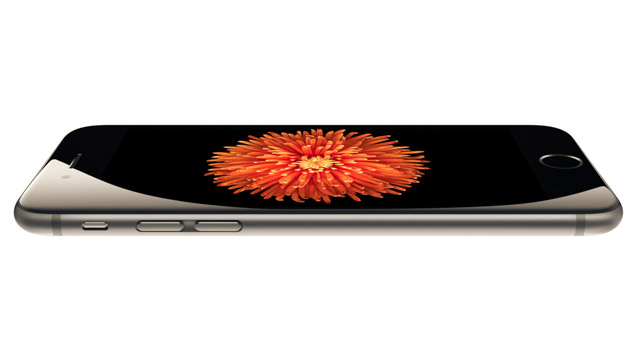
Nokia, Motorola, Sony Ericsson and BlackBerry were all victims of disruption. During the 1990s and 2000s, they shepherded the cellphone during its period of take-off into ubiquity. Then in the last five years, they all lost their leadership positions and are now on the verge of irrelevance. The common culprit was the 2007 launch of Apple’s iPhone.
Why has the iPhone confounded both industry rivals and proponents of disruption theory alike? Because they have had a one-sided view of disruption — enough to make them blind to its true nature.
The main proponent of disruption theory is Clay Christensen, who invented the term. His theory is that disruption (that is, the failure of otherwise successful companies) comes when those companies miss important innovations precisely because they are unappealing to their primary customer base. That provides an opportunity for new entrants to leap onto those technologies, ride them through improvements until they actually end up competing head-to-head for the customers of established firms.
With regard to the iPhone, Christensen made an initial assessment that he later admitted was incorrect. He missed that the iPhone represented one of these worrisome technologies and instead saw it as a sustaining innovation: an innovation that improved upon the phones of Nokia and the like rather than appealed to a different sort of customer.
As it turns out, he was wrong about that. As both Nokia and BlackBerry realised, the iPhone actually performed worse on things their customers cared about. It is hard to remember, but the initial iPhone was an awful phone, so Nokia dismissed it out of hand. Moreover, it didn’t have a physical keyboard, the primary thing that had attracted BlackBerry’s customers — and, actually, still does. What’s more, the iPhone, by making smartphones a sexier commodity, actually boosted BlackBerry sales in the late 2000s. So they all could be forgiven for thinking perhaps Apple had missed the boat.
Obviously, Apple was on the right course, as we now know. Christensen admitted that a few years later, saying that his mistake was to consider the iPhone as disruptive to phone makers when, in fact, it was disruptive to laptops.
Now lots of people have recognised that the iPhone is more of a handheld computer than a phone, but when you take this notion seriously, it is clear that it wasn’t disruptive to laptops. That isn’t even clear for the iPad. Instead, the companies that were disrupted were all handset makers. So it is pretty clear that if the iPhone was disruptive to anything it was disruptive to them.
The Christensen-style theory of disruption cannot handle the iPhone because the iPhone did not follow the path of that theory. To be sure, it was a poor performer on traditional metrics and then improved. But the path by which that disrupts is because the poor performance leads to lower-priced products that then improve and attract away the most price sensitive of established firm customers.
But that never happened with the iPhone. It was high priced from the start and remains so today. To be sure, those who adopted the iPhone-like approach to smartphones (Samsung, HTC and LG) were cheaper, but they were still more expensive than traditional handsets.

Some have taken this high price point to formulate a theory that the iPhone was disruptive from above (the high end) rather than the low end as Christensen has emphasised. Andreessen Horowitz’s Benedict Evans goes further and suggests this is endemic in mobile. Now it might be that entry in mobile comes from superior, higher-priced products. But that cannot cause disruption — the failure of incumbent firms.
This is because it is only by having low-priced products that incumbent firms can be wiped out rather than just stung. And that is an important element of the demand-side theory of disruption. Put simply, there is no such thing as high-end disruption, only high-end entry.
Instead, the way to think about this disruption is not to look to the demand-side (where the customers touch the firms) but the supply-side (what goes on inside the firms). Nokia, BlackBerry and the like were extremely good at producing well engineered, cheaper phones that did a limited range of functions but did them well.
The iPhone never competed on those functions and instead offered people things that weren’t otherwise available – desktop-like Web pages, a large screen and an intuitive but new user interface based on touch. The iPhone was made from traditional components but put together with what might be termed a different “architecture”. That architecture was designed around a completely new way of interacting with a handheld device. Traditional handset makers either dismissed that as a power-hungry luxury people would not pay for or tried to replicate it but ended up with something decidedly clunkier and not feeling quite up to what Apple had produced.
Academics like Rebecca Henderson and Kim Clark long recognised that this supply-side mechanism for disruption based on new architectures could trip up otherwise successful firms. And that is really what appears to have gone on with the iPhone. It was a new architecture, and to replicate it required essentially a clean slate for innovative teams.
Established firms rarely want to give up development teams that have worked well. This is what leaves the room open for entrants and, in the case of smartphones, we saw disruption on a large and long-term scale. And the only way to see it is to understand that there is more than one path to disruption. To do otherwise is to often try and drive a square peg in a round hole.![]()
- Joshua Gans is professor of strategic management at University of Toronto
- This article was originally published on The Conversation

